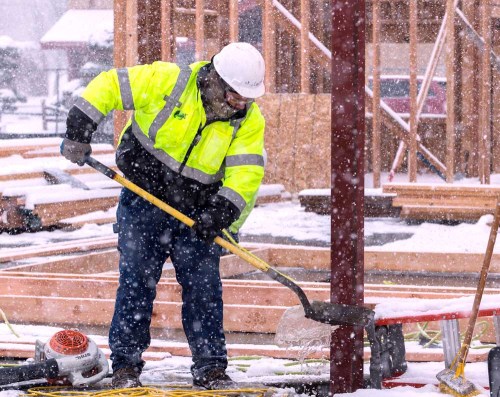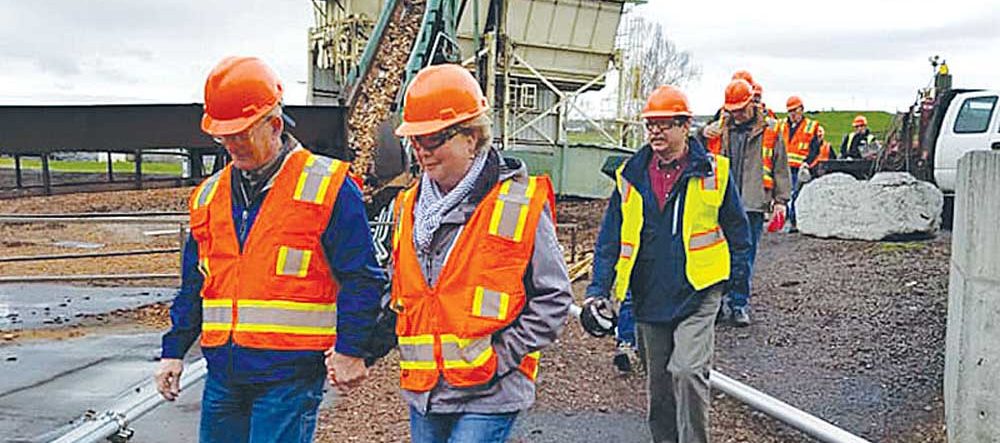La Nina to ease Northwest drought, forecasters say
Published 8:00 am Monday, October 19, 2020

- McCormack Construction worker Brendan Kight shovels water from a hole so that plumbing work can be done on Jan. 14, 2020. The National Oceanic and Atmospheric Administration said there is no strong signal to guide a winter forecast for temperatures in Oregon, but the odds favor above-average rain and snow for the northern half of the state. In the southern half, it’s a toss-up.
SALEM — A La Nina is expected to make winter in the Pacific Northwest wet and cold, relieving drought conditions in Oregon and Washington, the National Oceanic and Atmospheric Administration said.
In the southern tier of the U.S., La Nina is forecast to turn winter dry and warm, worsening drought conditions that cover much of the Southwest and parts of Northern and Central California.
“This is the most widespread drought that we have seen in the continental U.S. since September 2013,” said Mike Halpert, deputy director of NOAA’s Climate Prediction Center. “The winter forecast doesn’t bode well for many of the areas around the nation currently experiencing drought.”
In the 11 Western states, 80% of the land has some level of drought, the U.S. Drought Monitor reported Thursday, Oct. 15.
Some 37% of Oregon was in “extreme drought,” the second-worst classification. In Washington, 6% of the state, a section of Central Washington, is in extreme drought.
NOAA forecasters predicted conditions will improve in the two states in November, December and January.
The Pacific Ocean along the equator is cooler than normal. The ocean-surface temperatures have triggered changes in the atmosphere, creating a moderate to strong La Nina favorable to a cold and wet winter throughout Washington and the Idaho Panhandle.
A bit farther south, Oregon has a slightly different outlook. NOAA said there is no strong signal to guide a winter forecast for temperatures.
The odds, however, favor above-average rain and snow for the northern half of the state. In the southern half, it’s a toss-up, NOAA said.
The agency predicted Oregon’s drought will end in places and at least improve in the worst-hit parts of Central and Southern Oregon.
“At this point, we think the most likely areas to be cold are in the northern plains and Pacific Northwest and that’s really linked to the ongoing La Nina,” Halpert said in a conference call with reporters.
California’s outlook is less promising. An inland stretch of the state beginning at the Oregon border and extending nearly to the San Francisco Bay Area is in extreme drought.
The Drought Monitor foresees the drought extending into Central and Southern California. The drought is not expected to improve in Northern California, though NOAA said the region had equal chances of above- or below-normal rainfall.
“Hopefully, Northern California can get a little bit of a break as far as the drought goes — fill up some of those reservoirs,” NOAA meteorologist David Miskus said.
South of the Panhandle, most of Idaho falls in a band where La Nina’s influence is not strong enough for the odds to be tilted in either direction.
La Nina conditions are linked to above-normal snowpacks in the Northwest. NOAA, however, does not make snowfall forecasts.
Climatologists are unable to forecast months in advance the extent that storms will build snowpacks or relieve droughts in spots, Halpert said.
“The reality is the science just doesn’t allow for that,” he said. “The nature of a probabilistic forecast means that other outcomes are always possible, just not as likely.”









